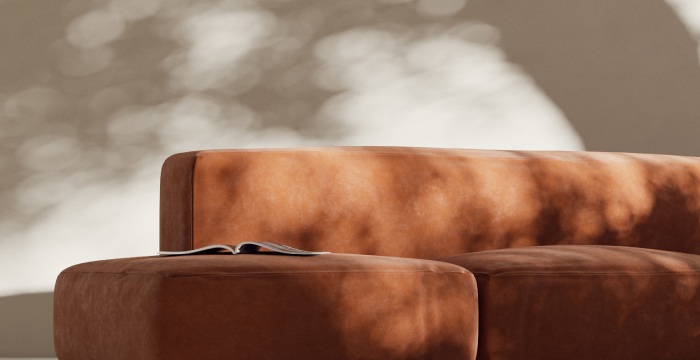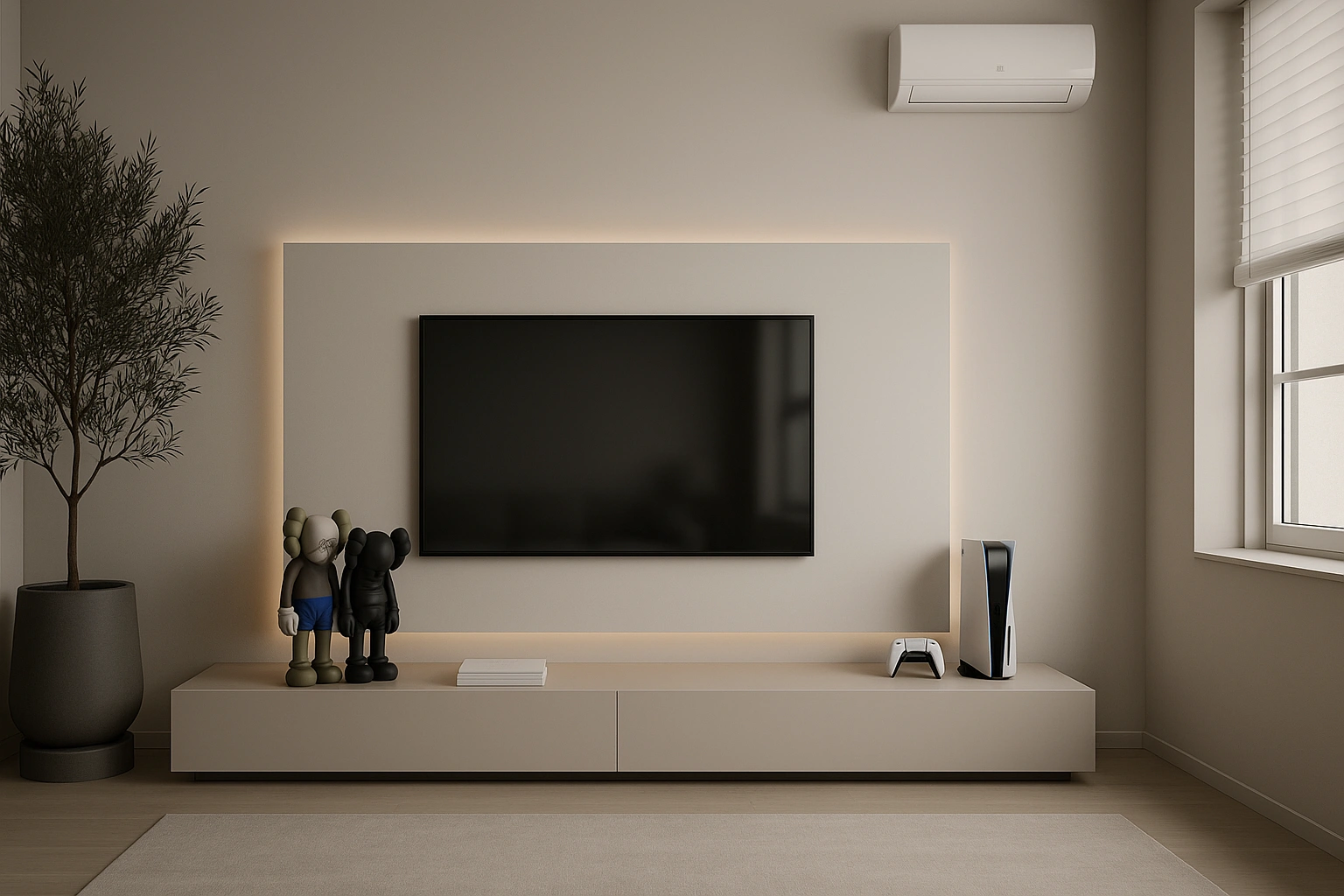Global household ownership of smart TVs will top 51% by 2026—that is more than 1.1 billion connected screens in living rooms worldwide. At the same time, the television-mount industry is valued at about US $2.1 billion in 2024 and is tracking toward US $3.5 billion by 2033, underscoring how seriously homeowners now take integrated viewing setups. North America’s most popular screen size has already reached 55 inches and is edging closer to 65 inches as prices fall and content quality rises.
TV on a Mobile Stand with Wheels
Open-plan floor plans, hybrid work patterns and the rise of renter-friendly décor have fuelled a boom in rolling TV carts. Market analysts put the rolling-stand segment at roughly US $1.2 billion in 2024 with a forecast of US $2.5 billion by 2033 as viewers demand cable-light screens they can angle toward a sofa, treadmill or alfresco dining table. A quality stand with locking casters keeps a 70-inch panel stable yet lets you reclaim floorspace in seconds. Wireless streaming sticks and battery-powered soundbars finish the cable-free look.
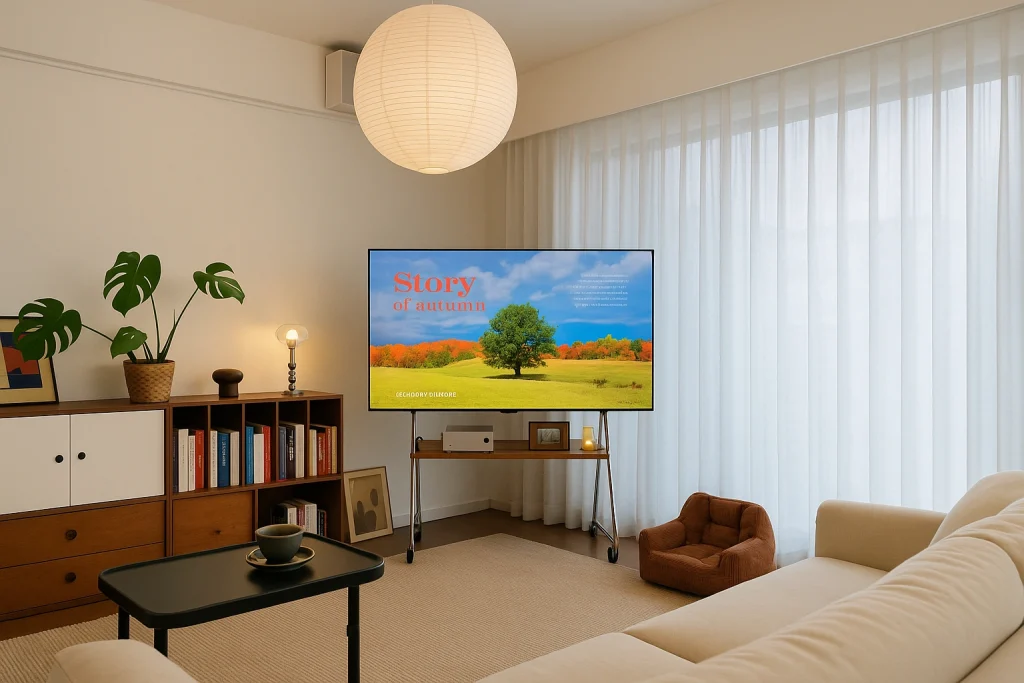
TV on a Stable Corner Stand
Tripod or easel-style bases turn an unused corner into a deliberate focal point without monopolising a whole wall. Lifestyle displays such as Samsung’s Frame remain popular because their matt bezels resemble art when the panel is in standby, a feature that encourages multi-use spaces to stay visually calm. Add a picture light and a tall plant to balance the composition and the television reads as part of a curated vignette rather than a block of black glass.
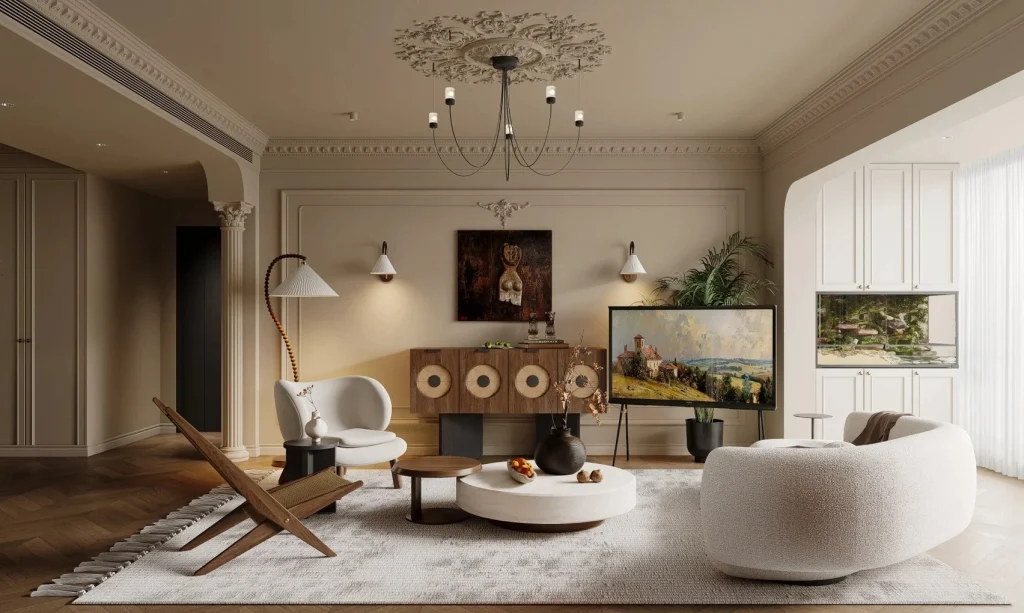
Wall-Mounted TV
When you want the technology to feel built-in, nothing beats a flush wall mount. Industry observers expect the overall mount category to surpass US $3.5 billion by 2033, largely because ever-larger OLED and Mini-LED screens demand sturdier, more discrete hardware. A textured backdrop—think fluted timber or lime-washed plaster—adds warmth and conceals wiring channels. A low media console beneath grounds the arrangement and offers ventilated storage for routers and consoles. Finishing touches such as a narrow shelf with books and ceramics, an electric ribbon fireplace, or trailing greenery soften the rectangle so the wall feels designed rather than dominated.
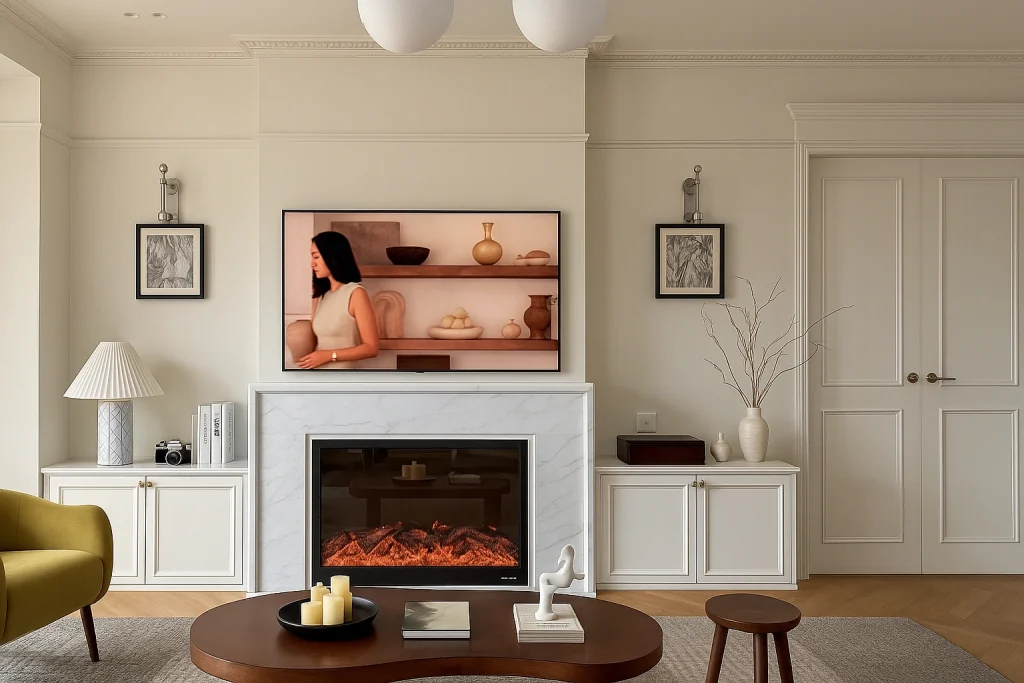
TV on a Console Unit
A freestanding console solves two problems at once: it keeps masonry intact for renters and delivers hidden storage for peripherals. Choose a piece roughly one-third wider than the screen so proportions feel intentional, then introduce vertical interest with a sculptural lamp on one end and a short stack of art books on the other. Because nothing is fixed, you can swap the console or repaint behind it without a renovation.
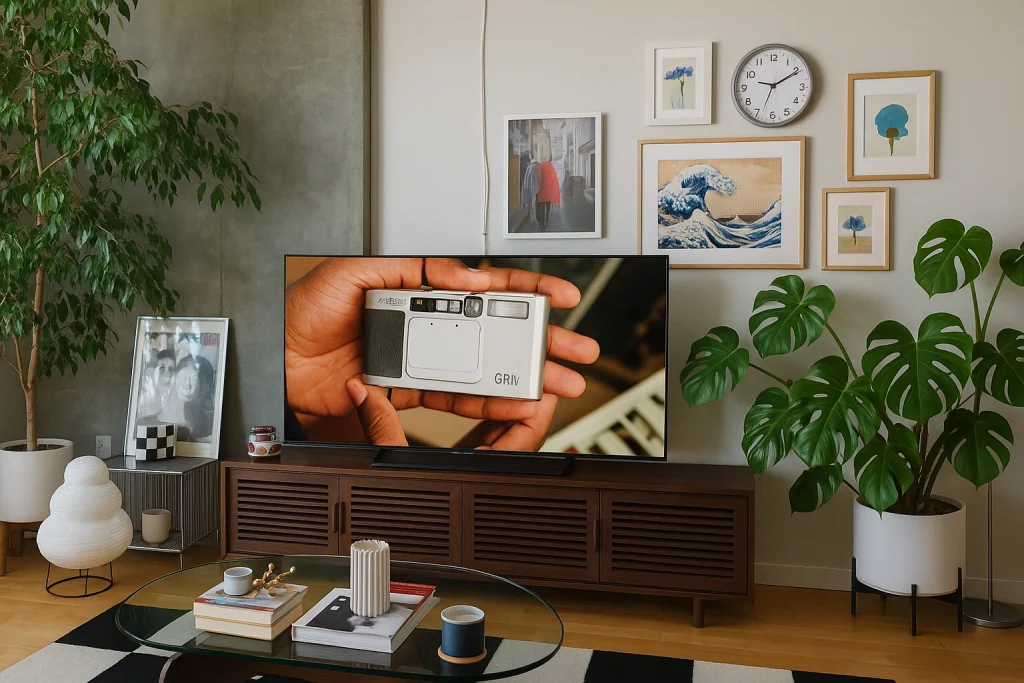
TV Surround with Storage for Small Screens
2/3 of UK homes still run a main screen under 50 inches, so pairing a modest panel with tall shelving makes the TV feel weightier and gains valuable storage. Painting the back panel a shade darker than the surrounding walls pushes the screen visually backward; integrated LED strips draw the eye toward books and objects rather than the powered-down display.
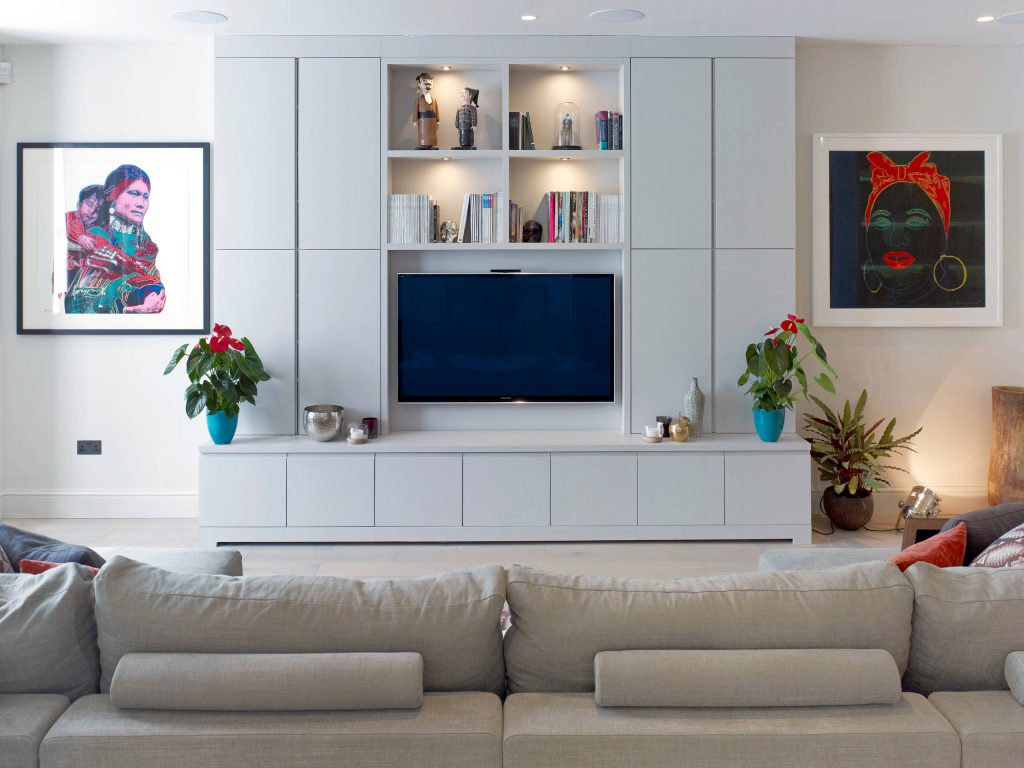
Hide-and-Reveal Ideas
Minimalist interiors often hide the screen completely. A ceiling-mounted sliding artwork glides across to expose the panel only at movie time, while pocket doors that recess into side cavities avoid the need for swing space. In bedrooms or multipurpose studios, motorised lifts installed in a foot-of-bed bench can raise a 55-inch display in under fifteen seconds, preserving a calm aesthetic when the content stops.
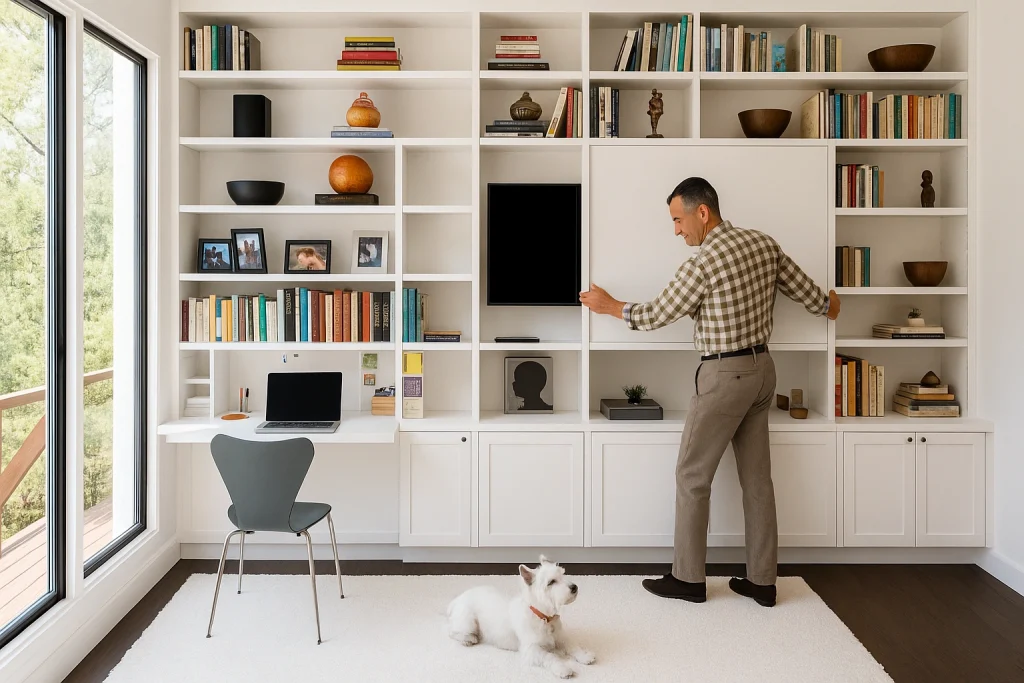
Projector Instead of TV
Short-throw laser models now cast 100-inch pictures from as little as 30 centimetres away, and the projector category is projected to add nearly US $4.8 billion in new revenue between 2025 and 2029. If your walls are smooth, a matte-white finish (gain 1.3 or higher) often removes the need for a drop-down screen. In brighter spaces, a ceiling-recessed screen paired with blackout blinds ensures daylight watchability. Slim soundbars or in-ceiling Atmos speakers supply the audio muscle without adding visual clutter.
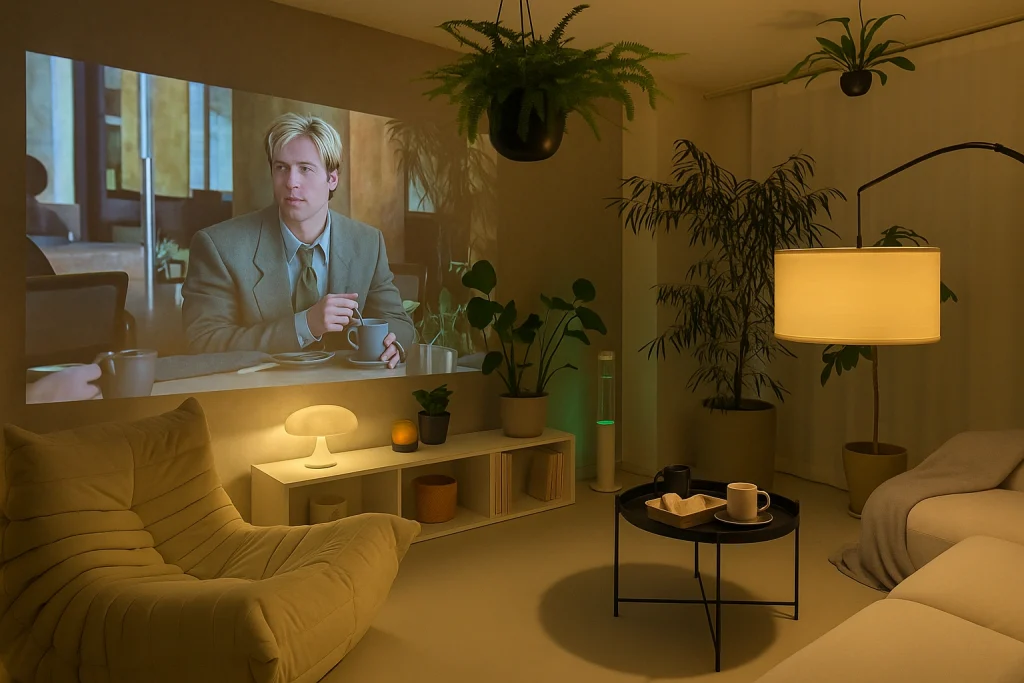
Ready to Create Your Ideal Viewing Space?
Start by mapping how you really live in the room—where you sit, work, stretch, and entertain. Measure the distance from the main seating position to the wall or cart and multiply by 0.6 to find a screen size that feels cinematic but not overwhelming. Next, sketch cable routes and power outlets to decide whether a rolling stand, console, or full wall mount keeps wires hidden and sightlines clean. Finally, layer in ambient light: bias LEDs behind a wall-mounted panel or low-glare sconces flanking a console reduce eye strain and instantly elevate perceived picture quality. If you are planning a renovation within the next three years, consider adding conduit in the wall now; the television market’s steady move toward larger, brighter displays means today’s 55-inch could be tomorrow’s “second set.”
Thoughtful placement not only protects eye comfort and optimises acoustics, it also safeguards resale value—listings that feature well-designed media walls receive more online views and higher offer rates, according to recent real-estate platform data. In short, treat your screen as an architectural element rather than an afterthought and you will future-proof both technology and décor.
References
1. Strategy Analytics, Global Smart-TV Ownership Forecast, July 2021.
2. Career Synergys, “TV Wall Mount Market Size, Key Drivers & Segments 2033,” May 2025.
3. Verified Market Reports, Rolling TV Stand Market Insights, February 2025.
4. Technavio via Yahoo Finance, “Projector Market to Grow by USD 4.79 Billion (2025-2029),” March 2025.
5. Angi, “What Size TV Should I Buy?” January 2024.
6. Insight Trends World, “TV Ownership and Screen Size Preferences in UK Homes,” April 2025.
